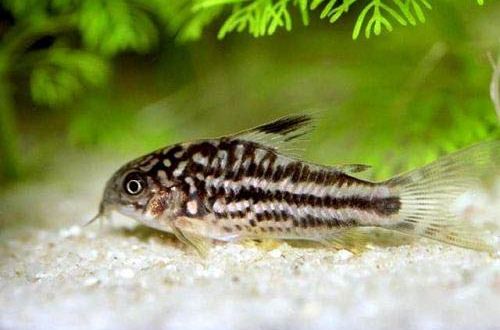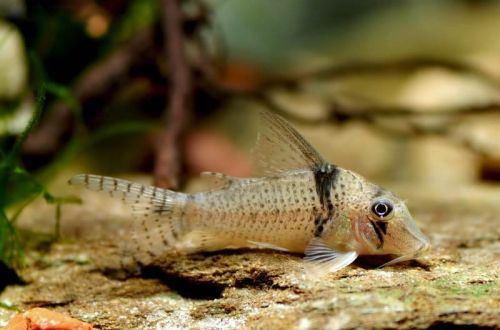
Lamprologus cylindricus
Lamprologus cylindricus, scientific name Neolamprologus cylindricus, belongs to the Cichlidae family. Easy to keep and breed fish. It is characterized by aggressive behavior, which significantly limits the number of compatible species. Due to its complex nature, it is not recommended for beginner aquarists.

Contents
Habitat
Endemic to Lake Tanganyika in Africa, it is the second largest in the world and has a unique ecosystem. The fish are found in the southeastern part of the lake off the Tanzanian coast. They live near rocky shores with sandy substrates. They can be both near the day and near the surface at depths up to 15 meters.
Brief information:
- The volume of the aquarium – from 150 liters.
- Temperature – 23-27°C
- Value pH — 7.5–9.0
- Water hardness – medium to high hardness (10-25 dGH)
- Substrate type – sandy or rocky
- Lighting – moderate
- Brackish water – no
- Water movement – weak, moderate
- The size of the fish is about 12 cm.
- Nutrition – high protein foods are preferred
- Temperament – aggressive
- Keeping alone or in pairs male / female
Description

Adult males reach a length of about 12 cm, females are somewhat smaller. Otherwise, gender differences are weakly expressed. The fish have an elongated cylindrical body. The dorsal fin is elongated from head to tail. The fins have pointed rays resembling miniature spikes. They serve as a defense against predators and can also be a potential problem when netting in an aquarium.
The coloration is black with rows of vertical light stripes. Some subspecies have a bluish border on the fins and tail.
Food
Carnivorous species, prefers live or frozen foods with herbal supplements. In a home aquarium, you can serve pieces of earthworms, mussels, shrimp, as well as bloodworms and brine shrimp. During feeding, it is worth adding spirulina flakes or nori to supplement the diet with herbal ingredients. It will be useful to periodically use dry food as a source of vitamins and trace elements.
Maintenance and care
The optimal size of the aquarium for a pair of fish (including other neighbors) starts from 150 liters. The design uses a sand and gravel substrate, piles of stones and rocks from which form caves, grottoes, etc. Any suitable items are suitable as shelters from decorative objects from a pet store, to ceramic pots, hollow tubes, etc. Shelters should be evenly spaced along the bottom of the aquarium, as each of them can become a place for some kind of territorial fish.
Lamprologus cylindricus is safe for plants, but their use is not required. If you wish, you can diversify the design with hardy varieties that can tolerate high-hardness alkaline water, such as anubias, valisneria, some mosses and ferns.
When keeping, it is important to ensure stable water conditions characteristic of the natural habitat. In addition to maintaining the required hydrochemical values and temperature, regular maintenance of the aquarium is key. Mandatory actions are the timely removal of organic waste and the weekly replacement of part of the water (10–15% of the volume) with fresh water.
Behavior and Compatibility
The aggressive behavior of alpha males in relation to relatives does not allow keeping Lamprologus cylindricus in the group. Single keeping or in company with one or more females is allowed. However, there is an important limitation – the fish must grow together from a young age. Placing adult fish grown in different places in one aquarium will lead to sad consequences.
Relations with other species are more friendly. Good compatibility is achieved with fish from Tanganyika of comparable size living in the water column. In a small tank, avoid introducing territorial species such as Julidochromis.
Breeding / Breeding
Breeding is quite simple if the fish are kept in suitable conditions and there are shelters for breeding offspring. With the onset of the breeding season, the male chooses the place of future spawning, where the female lays eggs. During the incubation period and in the first weeks after the appearance of the fry, the fish zealously protect them. During this period, the male becomes especially aggressive, so breeding is recommended in a separate aquarium.
Fish diseases
The main cause of most diseases of cichlids from Lake Tanganyika is unsuitable housing conditions and poor quality food, which often leads to such a disease as African bloat. If the first symptoms are detected, you should check the water parameters and the presence of high concentrations of hazardous substances (ammonia, nitrites, nitrates, etc.), if necessary, bring all indicators back to normal and only then proceed with treatment. Read more about symptoms and treatments in the Aquarium Fish Diseases section.





